I hate these things, doomed to premature failure. Anybody who ever owned one knows it. They’re manufactured this way for two reasons only: cost saving and max profit. Ends up being one reason, at the end of the day. Styrofoam and vinyl fabric are cheap. Sewn together in handy hot tub covers they can even be quite attractive and useful. Leave them on the tub for a few years and they become waterlogged nightmares as the stitching unravels. Go ahead waste ur time trying to dry them out on sunny days. Then either buy another one, or probably like rich people do, get a whole new tub.
Admittedly the materials bill for this one was probably as much as the cost of a new replacement due to the skyrocketing price of glue, coatings, and materials of all kinds, not to mention the disturbing trajectory on my time premium lately. With the exception of the fasteners, handles and reinforcing fitment hardware were fabbed from on-hand scraps. The center handle insert was a big aluminum safety sign that used to hang on a wall down at Redneck® years ago. The thing is mostly just Styrofoam, but now practically impervious to all patio hazards, including moisture ingress. It’ll probably outlast me.
I won’t bore anyone with a step-by-step or itemized bill of supplies because it’s really simple, just time consuming and tricky: Cut stuff up, glue/screw it together and paint. I’m pretty sure you could do this with just the Styrofoam and Truck Bed Liner (TBL) for around $300 if you can find the right thickness, cut to size and coat, without all the fancy design queues. I just like things a bit more robust and serviceable, so I’ll mention a few items of note with some examples and pics. There’s a little video showing how to make fastener holes in the Styrofoam for anyone wanting to spend some $$$ going for the full monty.
Most importantly, be sure to get the water-based TBL and test it, for at least the first couple coats – goes for glues, as well. The Super 77 pictured below works well, BUT (big but) the carrier/propellant, which flashes off in seconds, is styro-reactive. Just go very light on direct application with it. Acrylic paints are mostly safe for non-reactive Styrofoam application, but the TBL is all you really need. You might imagine any number of even more expensive epoxies, whatever. How much is totally budget dependent and probably directly correlates to longevity. I’d say a minimum of three TBL coats would give decent durability, if you’re careful with it. Have a place with good, active ventilation to work on the coating for as long as it takes to do that. Outside in the summer would be ideal.
This prototype is a 2-layer design spray-glued-and-screwed together for reinforcement and handles. The screen added as a first coating layer gives it better chip and impact resistance. Just remember everything you do to it adds weight. I can easily handle this one with my back broken in two places, so it came in light enough on the scales. That value would be the amount my hardware and TBL out-weighs the old vinyl fabric. Not sure how much of the coating mass cures off but IIRC, this one is just a bit heavier than the dry original with six coats on it. It’s what instigated this project in the 1st place – I can’t handle the old one anymore – too heavy. Still debating if I’ll put an apron on or just paint it again with white roof coating later next summer after it’s completely cured, leading to the last important note…
Total time spent on construction probably around thirty hours including stuff like looking for fasteners at Lowes. Be sure to anticipate at least a couple weeks curing time before actually placing the thing in use, if you go the TBL route. The stuff dries to touch quickly, forming a soft rubber-like coating in just a day or two. But it continues gassing out for weeks until a much harder surface eventually emerges. That’s why it’s sitting on the tarp now. Otherwise it sticks to the tub top.
OBTW, the Styrofoam itself is 50% thicker, so it should pay back with electricity savings over time. Already noticed it’s not running as much. There might be a market for this and I bet they could easily be mass produced for less than $100 a pop. Just need the right equipment and facilities. The handles and reinforcement could be 1-piece injection-cast plastic or aluminum with a real 1-pass commercial-grade spray-on or dip coating.
 |  | 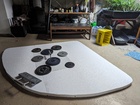 |
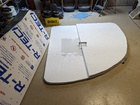 | 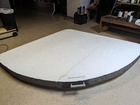 |  |
 | 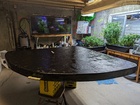 | 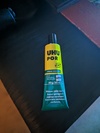 |
 |  | 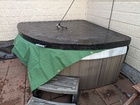 |
